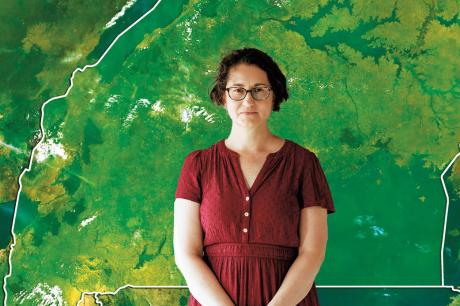
This is a computer graphic of the plastic layers of our handmade CDs. In between each layer is a thin sheet of sticker vinyl that acts like glue to merge two layers of plastic together. The plastic-vinyl-plastic-vinyl-plastic sandwich creates a water-tight seal. Together these materials create containers and channels for the water to accumulate and run through. This is important because it allows us to work with and precisely control very small amounts of water.
Published July 29, 2014, last updated on October 5, 2017 under Voices of DGHI
By Brittany Davis
When most people think of CDs they have fond memories of a shiny silver disk that played their favorite tunes or the platform that most computer programs come on. We’re taking a spin off this technology and utilizing it to solve some of the biggest problems we are facing right now with the paper-based bacteria tests. Technology that is going to be used in rural Africa must not only be effective but also low cost. CD players are cheap to produce and could be utilized to spin our homemade disks.
How the Disks are assembled
We make disks modelled after CDs by layering different materials with cut out patterns. Looking at the picture on the right, there are 3 disks: light green, purple, and dark green. The top light green disk has small holes to insert fluid. The purple disk has cut out features. The dark green disk provides a flat base for the other two. When sandwiched together, the disks create reservoirs to insert water, rectangular channels for water to flow through and places for water to collect.
How the Water Speed is controlled in the Disk
When water is added to the channels, we are interested in pumping it from close to the inner circle to the outer portion of the disk. This can be done by spinning the CD. The water will move along the channels because it is subject to a Centrifugal force and a Coriolis force (left image). The speed of water flow is influenced by the angular velocity -- how fast the disk is spinning. This is similar to taking a left turn in your car at different speeds with your coffee on the dashboard. If you take a turn at 20 mph, your coffee will travel across your dashboard in the direction of your passenger seat. But if you take the turn going 40 mph, the coffee will fly across your dashboard in the same direction. The speed of your coffee is subject to how large the centrifugal force is and the centrifugal force increases with how fast you turn the car. Along with this analogy, similar to the CD in the image, your car would be turning in the direction of the teal arrow. The purple arrow shows the direction of the centrifugal force on the steaming beverage or water in our case.


